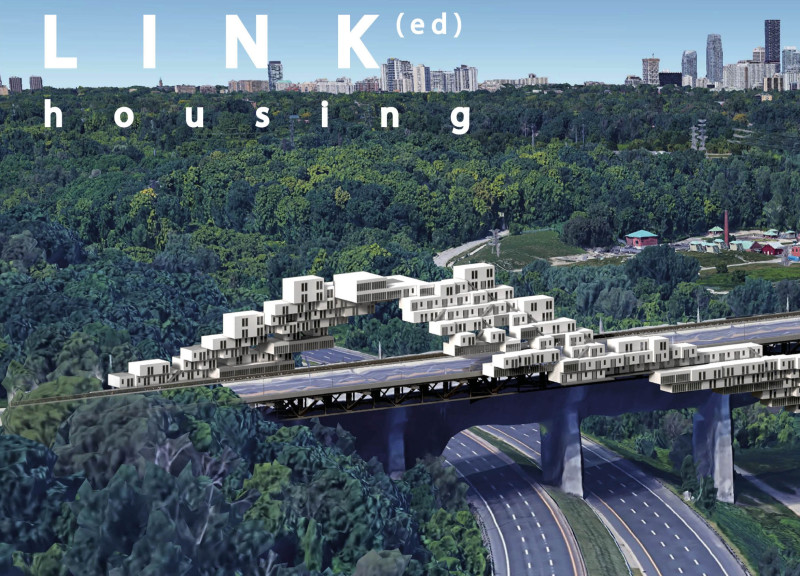5 key facts about this project
Functionally, the LINK(ed) Housing project aims to provide quality living spaces that not only meet the physical needs of residents but also enhance their interactions with the surrounding environment. By placing living units directly on bridges, the project forges new pathways for connectivity within the city, facilitating access to green spaces and transit systems. Each unit is designed to optimize natural light and views, creating a harmonious balance between urban living and nature. This integration reflects a critical understanding of the necessity for green spaces in urban settings, contributing to the overall well-being of residents.
The architectural design features unique elements that distinguish the project from conventional housing solutions. The units are characterized by angular forms that adapt to the existing structure of the bridges, demonstrating a clear response to the urban landscape. This adaptable design approach helps to maintain the integrity of the bridge while utilizing it for a purpose that has significant social implications. The semi-terraced layout allows for variations in height and space, which enhances the visual appeal and functional diversity of the units.
Materiality plays a crucial role in the project's design. Steel beams are employed for their strength and lightweight properties, providing essential support while minimizing disruption to the bridge's existing structure. Concrete panels create resilient walls and floors that ensure durability and fire resistance, essential for residential environments. Large glass facades enable transparency in design, blurring the lines between indoor and outdoor spaces, inviting natural light, and allowing residents to engage visually with their surroundings. This thoughtful use of materials not only reinforces the project’s structural integrity but also reflects an environmentally conscious ethos.
The project incorporates features that promote ecological balance and enhance the community experience. Green roof systems help to foster biodiversity while also serving practical purposes such as insulation and recreational space. These roofs encourage the presence of flora and fauna, which can positively impact the urban ecosystem. Terraced gardens provide opportunities for residents to cultivate their own plants, further promoting engagement with nature and enhancing community ties.
Community spaces have been thoughtfully integrated into the design, acknowledging the importance of social interaction within urban environments. Public parks adjacent to the housing units create accessible green spaces that foster recreation and relaxation. Shared terraces enhance communal gatherings, promoting a sense of belonging among residents. This emphasis on social interaction is vital in combating the isolation often felt in dense urban settings, thus contributing to stronger community ties.
The LINK(ed) Housing project redefines urban living by transforming existing infrastructure into functional and appealing housing solutions. It showcases how strategic design can address pressing urban issues, illustrating the potential for architecture to reshape communities in a meaningful way. The thoughtful integration of living spaces with the natural environment, along with a commitment to community development, sets this project apart as a compelling example of modern urban architecture.
For a deeper understanding of the project’s architectural plans, sections, designs, and overall ideas, viewers are encouraged to explore the full presentation of the LINK(ed) Housing project, which provides further insights into this innovative approach to affordable urban living.























